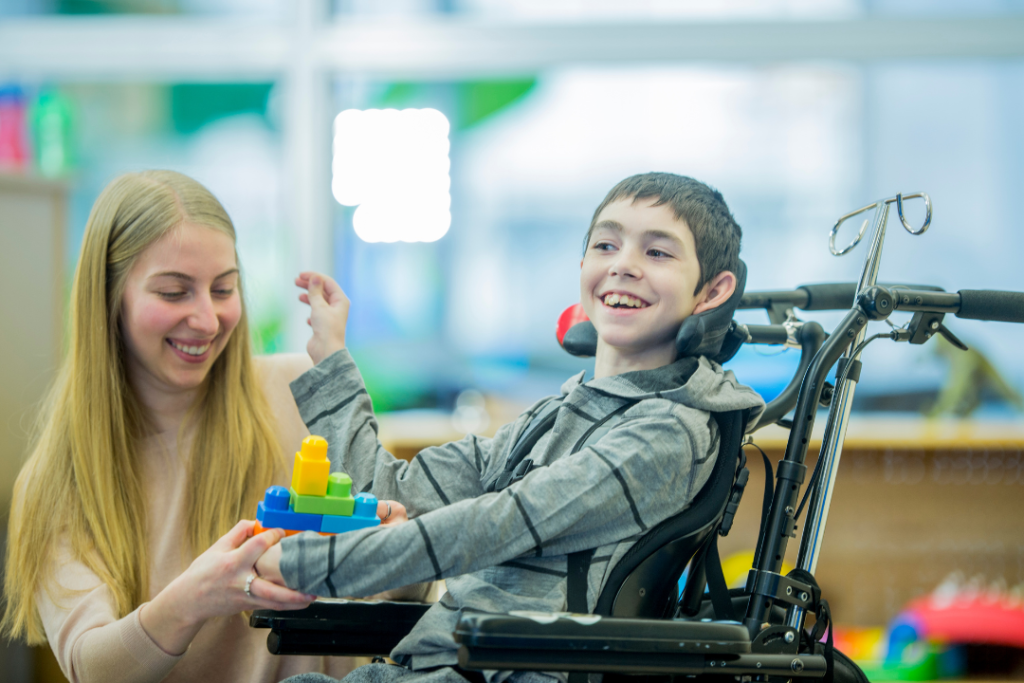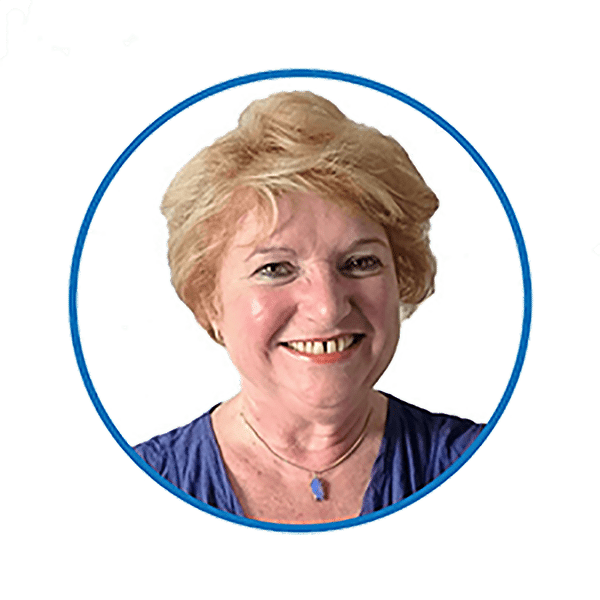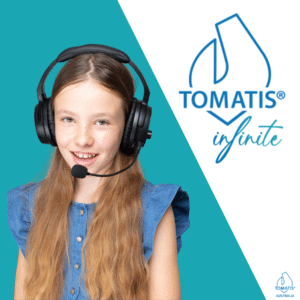Lily, a bright-eyed seven-year-old with a wild mane of brown curls, lived in a world that felt slightly out of sync. The energetic chaos of the playground overwhelmed her, conversations seemed like a jumbled mess, and mastering basic tasks like tying her shoelaces felt like an insurmountable hurdle. Diagnosed with Global Developmental Delay (GDD) at a young age, Lily’s single father, John, faced the daunting task of supporting her development on his own. Traditional therapy offered some progress, but frustrations lingered. Then, they discovered the Tomatis® Method, a ray of hope in their journey.
Motor Skills Mastery for Children: Navigating GDD, Cerebral Palsy, and Brain Injury

Claim your 20 minutes FREE consultation valued at $125 with our expert
Life with GDD:
John, a dedicated firefighter, juggled work with being Lily’s sole caregiver. Lily’s delays manifested in various ways. Speech was slow and unclear, her movements were clumsy, and focusing on tasks proved difficult. Social interaction was particularly challenging. The cacophony of the playground and the rapid-fire exchanges between kids left her feeling overwhelmed and withdrawn. John felt helpless, yearning to see his daughter truly thrive.
Children gradually learn to control their bodies and develop motor skills as they grow. This process is a crucial part of their overall development. However, for some children, conditions like Global Developmental Delay (GDD), Cerebral Palsy, or Brain Injury can present significant challenges in mastering these skills. This article explores these conditions and offers insights on supporting affected children’s motor skill development journey.
Understanding the Challenges
Global Developmental Delay (GDD) is a condition where a child takes longer to reach certain developmental milestones compared to other children their age. This delay can affect various areas, including motor skills. Children with GDD may struggle with both fine motor skills, like holding a pencil or tying their shoes, and gross motor skills, such as running, jumping or riding a bike.
Cerebral Palsy, on the other hand, is a group of disorders that affect a person’s ability to move and maintain balance and posture. It’s caused by damage to the developing brain, either before or at birth, when the birth process is traumatic, or during early childhood. The impact on motor skills can vary widely, from mild awkwardness in movement to severe impairment requiring assistive devices.
Brain injuries can also significantly impact a child’s motor skills, depending on which part of the brain is affected. These injuries can occur due to accidents, infections, or other medical conditions, and may result in difficulties with coordination, balance, or specific movements.
What are the causes of Developmental Disorders?
Developmental disorders arise from a complex interplay of factors. Genetic mutations can disrupt normal development, while environmental toxins or infections during pregnancy may interfere with crucial developmental processes.
Complications during childbirth, such as oxygen deprivation, can lead to lasting developmental issues. Interestingly, early childhood experiences, including severe neglect or trauma, can also contribute to developmental delays.
However, in many cases, the exact cause remains a mystery, highlighting the complex nature of human development and the need for continued research in this field.
What is Brain Injury Exactly?
A brain injury occurs when damage disrupts the normal function of the brain. This damage can be caused by a variety of factors, including:
- Trauma: Accidents, falls, and blows to the head can cause physical damage to the brain tissue, leading to impairments in various functions.
- Stroke: A stroke occurs when a blood clot blocks blood flow to a part of the brain, causing brain cells to die. The resulting damage can affect movement, speech, memory, and other cognitive functions.
- Infections: Meningitis and encephalitis are infections that can affect the brain, causing inflammation and potentially leading to brain injury.
- Oxygen Deprivation: Lack of adequate oxygen supply to the brain, such as during a drowning or cardiac arrest, can damage brain cells and lead to impairments.
The severity and impact of a brain injury will vary depending on the location and extent of the damage. Symptoms can range from mild headaches and dizziness to more serious problems like paralysis, speech difficulties, cognitive decline, and seizures.
What is the Difference between GDD, Cerebral Palsy, and Brain Injury?
While GDD, Cerebral Palsy, and Brain Injury can all affect a child’s development, they differ in crucial ways. GDD is a broad term indicating delays in multiple developmental areas, with causes often unknown.
Cerebral Palsy specifically results from brain damage during early development, primarily affecting movement and posture.
Brain Injury, however, occurs after birth due to various factors like accidents or infections and can affect different parts of the brain therefore different physical and mental abilities.
Intriguingly, their progression also differs: GDD may improve significantly with intervention, Cerebral Palsy is a permanent condition (though symptoms can be managed), and Brain Injury has potential for recovery depending on severity. Understanding these differences is crucial for tailoring effective support strategies for each condition.

Claim your 20 minutes FREE consultation valued at $125 with our expert
Is Global Developmental Delay Permanent?
Global Developmental Delay (GDD) isn’t necessarily permanent, but its long-term impact varies significantly. Some children, with early intervention and support, may catch up to their peers in certain areas. Others might continue to face challenges throughout their lives. The permanence often depends on the underlying cause, the severity, and how well the child responds to interventions. Fascinatingly, a child’s developmental trajectory can change over time, emphasising the importance of regular assessments and adaptable treatment plans. The key is to focus on individual progress rather than fixed expectations.
Can a child grow out of GDD?
The concept of “growing out” of Global Developmental Delay (GDD) is unique to each person with GDD. While some children make remarkable progress and may catch up in certain areas, others continue to face challenges. Early intervention, specialised education, and therapy can lead to significant improvements. However, it’s more accurate to say children can overcome many obstacles rather than simply outgrowing the condition. The brain’s plasticity during early years offers a window of opportunity for substantial progress. Ongoing support and monitoring are crucial, as developmental patterns can shift over time, sometimes revealing hidden potential.
Does cerebral palsy affect speech?
Cerebral palsy can indeed impact speech, adding another layer of complexity to this condition. As it primarily affects motor function, it can influence the muscles used for speaking as well as those in the middle ear, potentially causing difficulties with articulation, voice control, or breath support. Some individuals may also face challenges with language development due to associated cognitive impairments. However, speech difficulties aren’t universal in cerebral palsy, and many develop clear speech or find effective alternative communication methods. Intriguingly, early intervention with speech and language therapy can lead to significant improvements, showcasing the brain’s remarkable adaptability.
Supporting Motor Skills Development
Early intervention is extremely important when it comes to supporting children with these conditions. The sooner therapy and support begin, the better the chances of improving motor skills thanks to the neuroplasticity principles. A combination of physical therapy, occupational therapy, and sometimes speech therapy (as motor skills also affect speech) can make a significant difference.
Physical therapy focuses on improving strength, balance, and coordination. A physical therapist can design specific exercises for each child’s needs and abilities. Occupational therapy, meanwhile, helps children master everyday tasks like dressing, eating with utensils, or writing.
Play-based learning is another effective approach. By incorporating motor skill practice into fun activities and games, children are more likely to engage and persist in their efforts. This could include activities like building with blocks, playing catch, or doing simple puzzles.
Physiotherapy, also known as physical therapy, plays a crucial role in managing conditions like Global Developmental Delay (GDD), Cerebral Palsy (CP), and brain injury. Here’s how:
- GDD: Children with GDD often experience delays in achieving motor skills milestones. Physiotherapists can design exercises to improve gross motor skills like walking, balance, and coordination, and fine motor skills like grasping objects and manipulating tools. They can also help with postural development and overall mobility.
- Cerebral Palsy: CP affects muscle tone, movement, and coordination. Physiotherapy helps manage muscle stiffness and spasticity, improve balance and gait, and increase strength and flexibility. Therapists work on maximising functional abilities and promoting independence in daily activities.
- Brain Injury: The impact of brain injury on movement can vary greatly. Physiotherapy helps regain lost motor skills like walking, reaching, or grasping. For those with permanent limitations, therapy focuses on maximising remaining function and adapting to new challenges. It also addresses issues like balance, coordination, and pain management.
Physiotherapy is a vital component of a comprehensive treatment plan for GDD, CP, and brain injury. It empowers individuals to achieve their full potential in terms of movement, independence, and overall well-being.
Chiropractic adjustments can help realign the spine and improve nerve function, potentially enhancing motor skills and overall body coordination. Craniosacral therapy involves gentle manipulation of the cranial bones and spine to release restrictions in the central nervous system, potentially improving function and reducing pain.
Spinal flow techniques focus on restoring proper movement patterns along the spine, which may benefit children with motor skill difficulties. Therapy suits provide compression and resistance to help retrain the body’s movement patterns and strengthen muscles.
Laser therapy uses focused light energy to reduce inflammation and promote cellular repair, while light therapy exposes the body to specific wavelengths of light to stimulate healing processes. These alternative approaches offer additional ways for addressing motor skill challenges in children, beyond the standard therapies of occupational therapy, speech therapy, and physiotherapy.
Soundsory is a therapeutic approach that focuses on using modified music and sound frequencies to improve motor and balance as well as emotional regulation and their subsequent impact on neurological function.
The Tomatis® Method involves listening to electronically altered music through headphones. Specific frequencies are filtered or amplified, aiming to train the ear to better discriminate and process sound. This, in turn, is believed to stimulate the auditory pathways in the brain, potentially leading to benefits in various areas like:
- Communication: Improved auditory processing may lead to better speech clarity, comprehension, and language skills.
- Attention: Enhanced ability to filter out background noise and focus on relevant sounds.
- Sensory Integration: Soundsory may help integrate auditory information with other senses like touch and vision.
- Motor Skills: Some studies suggest potential improvement in motor coordination and planning.
The Tomatis® Method can assist with motor skills development as it uses sound via the ear which is the gateway to the brain. The vestibular system is the organ in the inner ear responsible for balance, coordination, and muscle tone so using sound to retrain the vestibular system helps to overcome some motor skills issues as well as it also assists with speech. Not a single muscle can move without the interplay of the vestibule system.
The use of adaptive equipment can also be beneficial. Special utensils, modified computer keyboards, or mobility aids can help children perform tasks more independently, boosting their confidence and encouraging further skill development.
Is cerebral palsy a developmental disability?
Cerebral palsy is indeed classified as a developmental disability, reflecting its impact on various aspects of a person’s development. Resulting from damage to the developing brain, it primarily affects muscle control but can also influence cognitive and social development.
However, it’s crucial to understand that cerebral palsy is a highly variable condition. While it’s a lifelong disability, many individuals with cerebral palsy lead fulfilling lives with appropriate support. The developmental impacts can range from mild to severe, highlighting the importance of individualised assessment and support strategies.

Claim your 20 minutes FREE consultation valued at $125 with our expert
How to teach a child with cerebral palsy to talk?
Teaching a child with cerebral palsy to talk requires a multifaceted approach specific to their unique needs. Speech and language therapy forms the cornerstone, focusing on improving muscle control for speech and developing language skills.
Augmentative and alternative communication (AAC) methods, such as picture boards or speech-generating devices, can be powerful tools in supporting communication. Consistency is key, with regular practice at home reinforcing skills learned in therapy.
Forbrain®
Forbrain® is a technological tool designed to support auditory stimulation and potentially enhance brain function.
Here’s how Forbrain® works:
- Bone Conduction Technology: Forbrain® utilises bone conduction technology to transmit sound vibrations through the bones of the skull directly to the inner ear. This bypasses the eardrum and middle ear, potentially providing a more stimulating auditory experience.
- Filtered Audio: Similar to the Tomatis® Method, Forbrain® allows filtering or modifying specific audio frequencies to energise and improve speech clarity and flow.. This aims to train the auditory system to better process sound and enhance listening skills via bone conduction .
Creating a supportive, patient environment that encourages all attempts at communication is crucial. Interestingly, recent advancements in technology have opened up new possibilities for communication support, offering exciting prospects for children with cerebral palsy.
What activities are good for children with developmental delay?
Activities for children with developmental delays should be engaging, age-appropriate, and target specific areas of development. Sensory play, such as exploring textures or water play, can enhance cognitive and motor skills. Simple puzzle games or sorting activities can improve problem-solving abilities and fine motor control.
Physical activities like modified sports or obstacle courses can boost gross motor skills and coordination. Music and movement activities often appeal to children while supporting multiple developmental areas. Interestingly, even everyday activities like helping with simple cooking tasks can be beneficial, promoting fine motor skills, following instructions, and understanding cause and effect.
What are the motor skills of children with cerebral palsy?
Motor skills in children with cerebral palsy can vary widely, presenting a unique profile for each child. Gross motor skills, such as walking, running, or maintaining balance, are often affected to varying degrees.
Fine motor skills, including grasping objects or writing, may also be challenging. Some children might experience muscle stiffness (spasticity) or involuntary movements, impacting their motor control. Despite these challenges, many children with cerebral palsy can develop significant motor abilities with appropriate therapy and support.
Fascinating enough, adaptive techniques and assistive devices can often help overcome specific motor difficulties, allowing for greater independence in daily activities.
The Importance of a Supportive Environment
Creating a supportive environment both at home and in educational settings is crucial. This involves making spaces safe and accessible for exploration and practice. It also means being patient, celebrating small achievements, and providing consistent encouragement.
Parents and caregivers play a vital role in this process. Regular practice of skills learned in therapy sessions helps reinforce learning and strengthen neural connections in the brain. However, it’s important to balance this with rest and play to avoid frustration or burnout.
Proper nutrition and adequate sleep are also essential factors in supporting overall development, including motor skills. A balanced diet rich in nutrients that support brain health can make a difference in a child’s progress.
There is another approach that can positively impact a person who has developmental delays, brain injury or even cerebral palsy. Let’s find out how.
What is the Tomatis® Method:
Lily’s therapist, aware of her plateaued progress, suggested exploring the Tomatis® Method. Developed by Alfred Tomatis, an ear, nose, and throat specialist, it focuses on auditory stimulation to improve listening skills and brain function. Lily”s father,, after trying multiple therapies giving minimal outcomes, was open to trying something new.
The Tomatis® Approach for Navigating GDD, Cerebral Palsy and Brain Injury:
The Tomatis® Method involves listening to electronically modified music through headphones. Specific frequencies are filtered or amplified, aiming to train the ear to better discriminate and process sound. This, in turn, stimulates the auditory pathways in the brain, impacting overall neurological function.
As mentioned before, in the ear there is the vestibular system responsible for all movements, balance and coordination. The ear is also involved in sound recognition to assist with speech. So assisting the body and the brain via the ear is a great way to enhance the body and brain to function better.
Lily’s Experience:
John’s relentless research led him to the Tomatis® Method. While some viewed it with scepticism, the potential benefits of improved communication and social skills resonated with him. He discussed it with Lily’s therapist,, who, after reviewing Lily’s case, cautiously agreed it could be worth a try.
Positive Outcomes After the Tomatis® Method Sessions:
The Tomatis® Method for children involves listening exercises with specially modified music through headphones. Specific frequencies are filtered or amplified, aiming to train the auditory system to better process sound. These sessions, typically lasting an hour, less or more, are intensive and require a daily commitment for a specific period.
Session 1: A World of New Sounds
Lily’s first session was an unfamiliar experience. The filtered music sounded strange, and she fidgeted in her chair. John sat beside her, listening too, offering encouragement. Gradually, Lily seemed to settle in. Afterwards, she remarked on how “different” the sounds around her felt. A seed of curiosity had been planted.
Days 2-14: A Series of Multiple Changes
The daily listening sessions became a part of their routine. Over time, John noticed subtle shifts. Lily seemed more attentive during conversations, her focus improved during playtime, and her frustration with tasks like buttoning her shirt lessened. She even started humming along to the modified music, a newfound fascination with sound blooming within her.
Reassessment and a Cautious Hope
After 14 days of intensive listening, Lily underwent a reassessment with her therapist. The results were encouraging. Her speech clarity had improved, and her ability to follow instructions showed significant progress. Social interaction remained a challenge, but Lily now seemed more engaged in observing others at play. The therapist cautioned that long-term benefits may take time, but the initial progress was promising.
A 4-week Break and Missed Melodies
The following 4-weeks were a period of watchful waiting. The daily listening sessions stopped, and John observed Lily closely. While some of the newly acquired focus seemed to linger, the initial spark of engagement with the world around her dimmed slightly. It was a reminder of the ongoing nature of Lily’s journey.
Returning to the Rhythm: Second intensive of 14 days
The second round of listening sessions began. This time, Lily approached them with a newfound familiarity. The “different” sounds now felt more like a comforting routine. Her progress continued, albeit at a slower pace. John noticed her engaging actively in conversations at the park, even attempting simple rhymes during playtime. The frustration and anxiety in her eyes when faced with challenges seemed to lessen, replaced by a glimmer of determination.
A Brighter Melody: The Road Ahead
The Tomatis® Method wasn’t a cure for Lily’s GDD, but it provided her with a valuable tool. The improved auditory processing skills offered a foundation for further development. Her therapist recommended continuing traditional therapy alongside periodic Tomatis® sessions. John enrolled Lily in a social skills group, where she could practice her newfound communication skills in a safe environment as well as starting some athletics to continue improving her motor skills with balance, coordination. She continued to work on fine motor skills with her Occupational therapist.
Looking Forward:
The journey ahead for Lily and John is far from over, but there’s a newfound optimism in their hearts. Lily’s world, once a jumbled melody, is slowly becoming a harmonious symphony. She still stumbles at times, but with dedication and support, she’s learning to navigate the complexities of communication and social interaction. The Tomatis® Method wasn’t a magic solution, but it played a vital role in helping Lily find her rhythm, one carefully filtered note at a time.
The Science Behind the Benefits:
While the Tomatis® Method is not a cure for GDD, some theories explain its potential benefits. By stimulating the auditory pathways, it enhances neural connections and improves sensory integration. This, in turn, leads to better processing of information, impacting communication, motor skills, and social interaction.
The Tomatis® Method wasn’t a quick fix, but it was a turning point for Lily. It provided her with tools to manage her GDD and unlock her potential. She continued with speech therapy, occupational therapy and physiotherapy but with a newfound focus and confidence to be able to lead a normal life.
Lily’s story highlights the importance of exploring various approaches to support individuals with developmental challenges. The Tomatis® Method helped Lily become more independent and confident. For her, it was a key that opened doors to a brighter future, allowing her to connect with the world around her in a way that saved her from entering adolescence and adulthood with confusion and low self-esteem.
Remember
Every child develops at their own pace. The journey to motor skill mastery for children with GDD, CP, or brain injury may require more time and effort, but with dedication, support, and the right therapies, significant progress can be achieved. Celebrate every milestone, no matter how small, and focus on the child’s potential rather than their limitations.
The goal is not to reach a predetermined standard, but to help each child achieve their full potential and gain as much independence as possible in their daily lives.
By understanding these conditions and implementing supportive strategies, we can help children navigate their unique developmental journeys and achieve motor skills mastery to the best of their abilities.
Françoise Nicoloff
Official Representative of Tomatis Developpement SA in Australia, Asia and South Pacific, Director of the Australian Tomatis® Method, Registered Psychologist, Certified Tomatis® Consultant Senior, Tomatis® International Trainer and Speaker, Co-author of the Listening Journey Series, 45 Years of Experience, Neurodiversity Speaker



